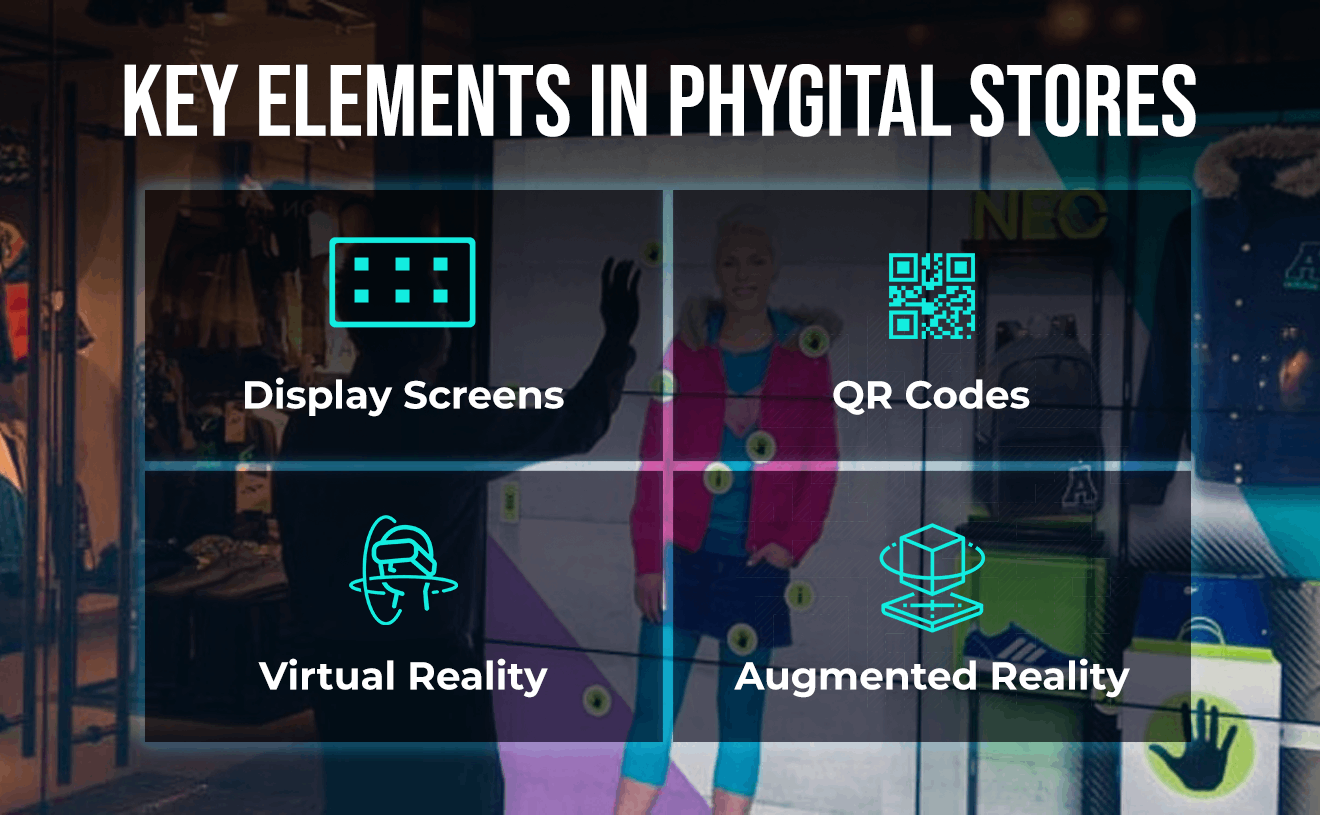
How to Deliver a Great Phygital Experience?
Recently while scrolling through the latest developments in eCommerce and retail trends, we came across the word- Phygital. This word stirred an interest within and we wanted to learn more about it. The word was used to demonstrate Amazon’s first phygital clothing store. What further intrigued our interest was Amazon was ready to cause a stir in regular retail stores by offering a mix of physical and digital experiences (leading to improved Phygital experience).
Brands today want to have a connection with their customers on every available platform, be it television, browsing the internet, or while traveling (ads, billboards). Brands have started to leverage phygital experiences to improve engagements and build trust with their customers and potential clients. This helps them map customer journeys across online and offline platforms.
Did you know? 82% of consumers conduct a “near me” search to read reviews and find better deals in physical stores!
What is a Phygital Experience?
A phygital experience is a union between the physical and digital worlds. In layman’s terms, it can be said that phygital stores are an integration of eCommerce with physical traditional stores. In the modern world where interconnected experiences stand out; a phygital experience adds the convenience of search and payment via digital stream and adds the comfort of interacting with people present in the store. This trend allows the shopkeepers to react to customers’ needs, which would help them improve sales.
Key Elements of a Phygital Store:
Display Screens: Screens offer multiple options for the customer to choose from without having to roam around the entire store. This helps customers to easily place orders for their preferred items with ease. Some examples of the use of screens to enhance the phygital experience include- Displaying the food menu in QSR stores, and virtual cloth fitting rooms for easier checkouts from a fashion retail store.
QR Codes: The pandemic changed how people used to make payments. Instead of cash, more customers now prefer to make payments online. A QR code can be usually found at store checkouts, which enables cashless transactions. This helps stores in faster checkouts while obtaining customer information (which can help them with omnichannel communication).
Virtual Reality (VR): This technology has been the game changer for many companies and it seems to have enormous potential. Creators have created multiple virtual environments that replicate the physical environment such as boutiques, supermarkets, and more (remember the metaverse?)
Augmented Reality (AR): This technology has been revolutionizing shopping experiences expeditiously! It’s estimated by 2024, there would be 1.73 billion AR users worldwide. It helps customers interact, customize, and engage with the product, allowing customers to make the right purchase decision.

What is Phygital Strategy?
As retail brands try to improvise the hybrid model for their stores, creating a phygital world for consumers. Investing in digital functionalities like the ones stated above enables brands in creating an omnichannel presence. Finding the right physical strategy will be key for retailers to have a wider business reach. The key focus areas for a phygital strategy include having a great on-ground customer experience with active social media marketing and Online Reputation Management (ORM).

Examples of Phygital Retail Stores Across the Globe
The use of omnichannel retail solutions will improve the global market size with a compound annual growth rate (CAGR) of 13.6% from 2022 to 2030. The need for data points and the increasing demand for a phygital experience will improve this market segment further.
Marks & Spencer AR store navigation app: This interactive AR store map helps shoppers navigate all the aisles and find the best product they are in search of. The app displays real-life shelves and points to product locations while showcasing the fastest route to reach the item.
Swigr AR app for alcoholic beverages: This app helps customers choose their poison by offering them an immersive digital experience on physical cans and bottles. It also comes with a buy-now option for impulsive purchases- beat that!
Walgreen Cooler Screens: This was one of the most intriguing phygital retail examples in the US. The doors display digital images of what’s on the physical shelf, along with product information, prices, and advertisements.
Nike Phygital Retail Store: In one of the coolest stores ever, Nike created this seamless retail environment. The custom-built multi-user, multi-touch screens improved the brand experience that dealt with all the product information to online purchase options.
Amazon Go: Amazon introduced the world to the most advanced shopping experience with no line and no checkouts- Just grab and go! Whatever the customers pick up will be added to the virtual cart- done using computer vision, deep learning algorithm, and sensor fusion. As you leave the store, you will be charged for your items through your Amazon Go account! How cool is that?
The Future of Retail is Phygital
No matter how hard you try to keep up with the traditional store experiment, your customers will eventually turn to brands that offer a personalized and customized experience. A phygital experience will open new opportunities and improve engagements between the customer and brand. To help with the digitization of stores, LogiNext can help with real-time reports and analytics. It can also help with delivery requirements using its own fleet or third-party carriers. Additionally, get a personalized branding experience on the last mile delivery tracking for customer orders to increase revenue. Click on the red button below to connect with our expert.
130







@LogiNext